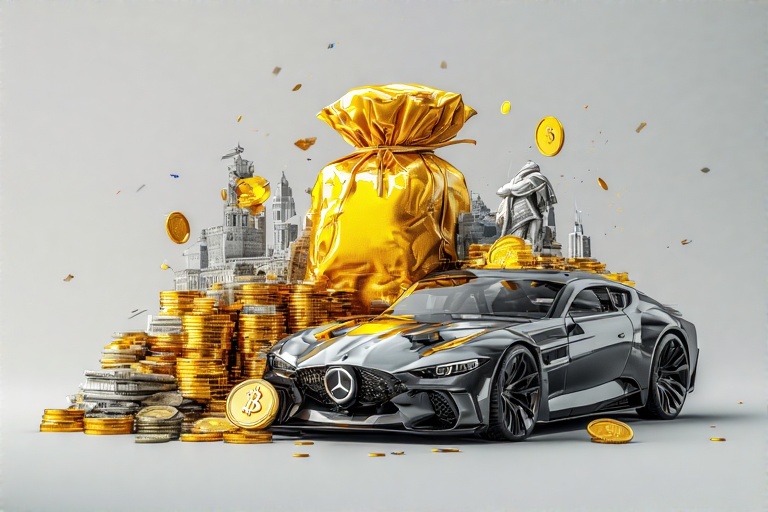As traditional financial markets fluctuate, investors seek alternative avenues for diversification. Non-traditional assets such as fractional art platforms and classic automobiles offer unique risk-return profiles, uncorrelated with equities or bonds. These passion-driven markets promise long-term appreciation but require careful scrutiny of liquidity constraints, valuation transparency and operational costs. This article examines how fractional ownership is reshaping access to blue-chip art, how classic cars perform as “rolling artworks,” and what risks and returns investors should expect.
1. Fractional Art Platforms: Democratizing Masterpieces
High-value artworks traditionally reserve entry for the ultra-wealthy. Fractional art platforms—Masterworks, Rally, Arthena and Otis—allow investors to own shares in blue-chip paintings starting at $20 per share. Masterworks, the oldest and largest, boasts over $900 million in assets under management and targets 8–15 percent annualized returns based on the Mei Moses Contemporary Art Index. These platforms form special-purpose vehicles (SPVs) that acquire artworks, issue shares and sell the piece at auction within 3–10 years.
- Valuation: Indexed to auction hammer prices and comparative sales.
- Liquidity: Secondary markets exist but spreads can exceed 10 percent; holding periods average five years.
- Costs: Annual management fees (1–2 percent) plus exit commissions reduce net returns.
2. Classic Cars: The “Rolling Works of Art”
The classic automobile market—worth over $50 billion globally—has outperformed many asset classes. According to Knight Frank’s Luxury Investment Index, collector cars returned 185 percent over the last decade. Platforms such as MCQ Markets, TheCarCrowd and Splint Invest divide ownership of Ferrari 512 BBi or Porsche 911 RS into hundreds of shares, priced from $100 per share. Investors earn capital gains as rarity and condition drive appreciation.
- Valuation Drivers: Rarity, provenance, restoration quality and global collector demand.
- Liquidity: Fractional shares trade on platform-hosted markets; full-car auctions require 6–12 months lead time.
- Costs: Storage, insurance and maintenance fees (1–3 percent of car value annually).
3. Liquidity and Market Depth
Illiquidity is a hallmark of alternative assets. Fractional shares improve access but secondary trading remains limited. Art shares on Masterworks’ secondary market often trade at discounts of up to 15 percent. Car-share platforms facilitate peer-to-peer bids, yet filling orders can take weeks. Investors must accept wider bid-ask spreads and potential markdowns when exiting positions.
- Lock-up periods of 2–5 years are common.
- Secondary markets are platform-specific; no cross-platform arbitrage exists.
- Transaction fees and minimums apply—flat fees of $50–$200 per trade or 2–5 percent of trade value.
4. Risk Considerations
Beyond illiquidity, alternative assets carry unique hazards:
- Valuation Opacity: Limited public data can obscure price discovery—reliance on auction results and index providers is critical.
- Operational Risk: Damage, theft or storage mishaps can impair value. Platforms with professional custodians and insurance reduce exposure.
- Regulatory & Tax: SPVs may create complex tax reporting. Stamp duties on artwork or registration fees for vehicles add unexpected costs.
- Concentration Risk: Holding one “lot” of art or a single car amplifies idiosyncratic outcomes—diversification via multiple shares or assets is advisable.
5. Return Potential and Historical Performance
Long-term data supports alternative asset returns alongside heightened volatility:
- Contemporary art (Mei Moses index) has delivered roughly 8 percent annualized since 1995, with lower correlation to S&P 500 returns.
- Classic cars (Hagerty Blue Chip Index) outpaced equities over 2007–2022, averaging 10–12 percent per year, though downturns can exceed 20 percent.
- Fractional platforms aim for net returns of 6–12 percent after fees—but actual outcomes hinge on timing of sale events and market conditions at exit.
6. Best Practices for Building a Non-Traditional Portfolio
- Clarify Objectives: Decide if you seek pure diversification, hedge against inflation or potential alpha.
- Diversify Across Assets: Limit exposure to any single artwork or vehicle to 5–10 percent of your total alternative-asset allocation.
- Assess Platform Credibility: Verify audit history, insurance coverage, SPV structure and secondary-market track record.
- Understand Fee Structures: Layered fees—management, custody, transaction—impact net returns more than headline yields.
- Plan for Lock-Ups: Ensure you can commit capital for 3–7 years without compromising cash-flow needs.
- Monitor Indices: Track Knight Frank, Mei Moses and Hagerty indexes to benchmark performance and time exits.
Conclusion
Fractional art and classic cars transform illiquid collectibles into accessible investments, offering returns uncorrelated with mainstream markets. Yet these passion assets demand rigorous due diligence: valuation clarity, operational safeguards, and realistic liquidity expectations. By combining careful selection, disciplined sizing and diversified exposure, investors can harness the long-term growth potential of non-traditional assets while managing their distinctive risks.







Add a Comment